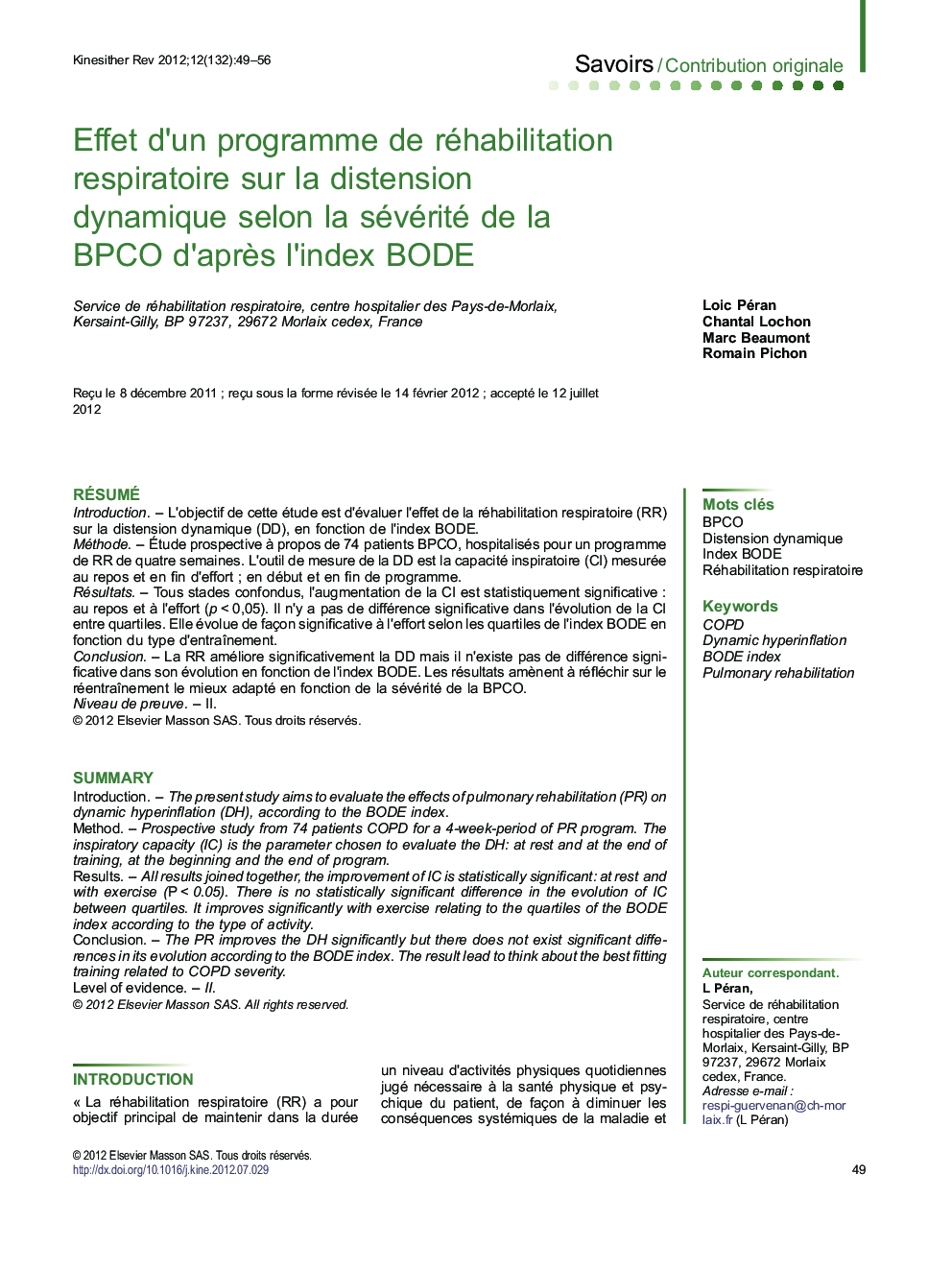| Article ID | Journal | Published Year | Pages | File Type |
|---|---|---|---|---|
| 2623036 | Kinésithérapie, la Revue | 2012 | 8 Pages |
RésuméIntroductionL’objectif de cette étude est d’évaluer l’effet de la réhabilitation respiratoire (RR) sur la distension dynamique (DD), en fonction de l’index BODE.MéthodeÉtude prospective à propos de 74 patients BPCO, hospitalisés pour un programme de RR de quatre semaines. L’outil de mesure de la DD est la capacité inspiratoire (CI) mesurée au repos et en fin d’effort ; en début et en fin de programme.RésultatsTous stades confondus, l’augmentation de la CI est statistiquement significative : au repos et à l’effort (p < 0,05). Il n’y a pas de différence significative dans l’évolution de la CI entre quartiles. Elle évolue de façon significative à l’effort selon les quartiles de l’index BODE en fonction du type d’entraînement.ConclusionLa RR améliore significativement la DD mais il n’existe pas de différence significative dans son évolution en fonction de l’index BODE. Les résultats amènent à réfléchir sur le réentraînement le mieux adapté en fonction de la sévérité de la BPCO.Niveau de preuveII.
SummaryIntroductionThe present study aims to evaluate the effects of pulmonary rehabilitation (PR) on dynamic hyperinflation (DH), according to the BODE index.MethodProspective study from 74 patients COPD for a 4-week-period of PR program. The inspiratory capacity (IC) is the parameter chosen to evaluate the DH: at rest and at the end of training, at the beginning and the end of program.ResultsAll results joined together, the improvement of IC is statistically significant: at rest and with exercise (P < 0.05). There is no statistically significant difference in the evolution of IC between quartiles. It improves significantly with exercise relating to the quartiles of the BODE index according to the type of activity.ConclusionThe PR improves the DH significantly but there does not exist significant differences in its evolution according to the BODE index. The result lead to think about the best fitting training related to COPD severity.Level of evidenceII.
